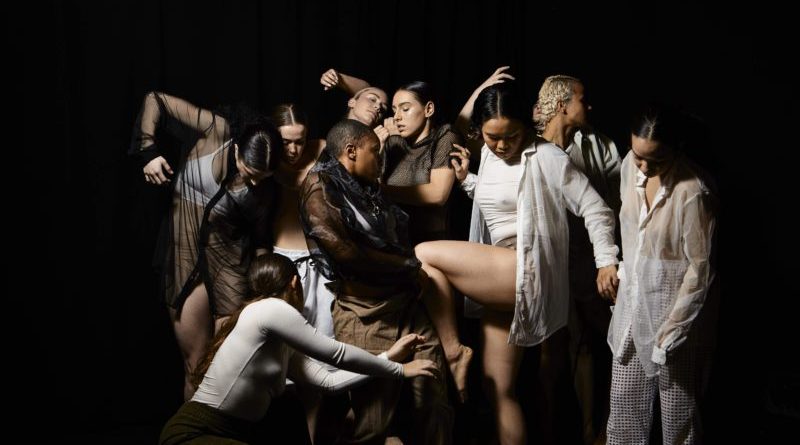INTERVIEW: MICHIYAYA Dance embraces inner self in new dance work
Photo: The dancers of MICHIYAYA Dance bring /wē/, an exploration of gender identity, to life. Photo courtesy of Jeremiah Cumberbatch / Provided by Michelle Tabnick PR with permission.
MICHIYAYA Dance, under the leadership of co-artistic directors Anya Clarke and Mitsuko Verdery, have crafted a new dance work that looks at gender identity and the inner self. /wē/ plays this weekend at The Theater at the 14th Street Y. Performances run through April 28.
In the piece, dancers search for transcendence, embodiment, neutrality and autonomy, according to press notes. Clarke choreographs the movement, while Verdery provides design work. Six femme-identifying artists bring the dance to life.
Recently Hollywood Soapbox exchanged emails with Clarke and Verdery. Questions and answers have been slightly edited for style.
Could you describe how your artistic collaboration works?
Verdery: We’ve built a foundation where Anya choreographs all of the movement, and I build in everything in between from concept, context, intention, costumes, scenic elements, etc. We always overlap, as I lend choreographic elements and Anya visual/contextual design, but that breakup of tasks really helps the flow of creating.
Do you see your choreography and direction as collaborative with your fellow dancers?
Clarke: For sure. We always need their input on movement because they are initially the ones actually executing the phrase work. I think that without their collaboration there would be no real connection of movement and emotion — which is a big part of what we stand for as a company.
What can audiences expect from this world premiere?
Verdery: I’d tell people to come with no expectations. I want to leave room for people to be present and have a personalized experience. With that said, /wē/ features our incredible dance artists and an exciting group of collaborators: slowdanger with live soundscapes, Jess Medebach and Char Stiles with live projection design, and Alejandro Fajardo with lighting design. We’ve been in process for /wē/ for two years now, creating and performing various iterations and drafts. We’re really looking forward to sharing what it’s evolved into.
Why is it important to explore issues of gender in modern dance?
Clarke: It’s important to explore issues of gender in modern dance because well … why not? There’s so much more to the human body than just it’s physical parts. I think we get wrapped up in gender as being defined solely as woman and man, that we limit ourselves as artist to create work that idealizes this notion.
I stray so far away from that as a creator. I’m more worried about what the individual is feeling and performing than what their body parts are. I think modern dance is slowly moving in the direction of eliminating the importance of gender. We just need this generation and future generations to continue to test those boundaries.
Would you say this new piece is a commentary on some of the big news stories and societal developments in recent years?
Verdery: No one event comes to mind, but /wē/ definitely touches on ideas of gender fluidity, relationship navigation and body autonomy — all of which have come up recently in various ways. Our current government is literally trying to confine us, but I’m really proud of my generation for being leaders in organizing and resisting. I think MICHIYAYA and /wē/ is our way to join that resistance.
By John Soltes / Publisher / John@HollywoodSoapbox.com
MICHIYAYA Dance presents /wē/ through April 28 at The Theater at the 14th Street Y in New York City. Click here for more information and tickets.

